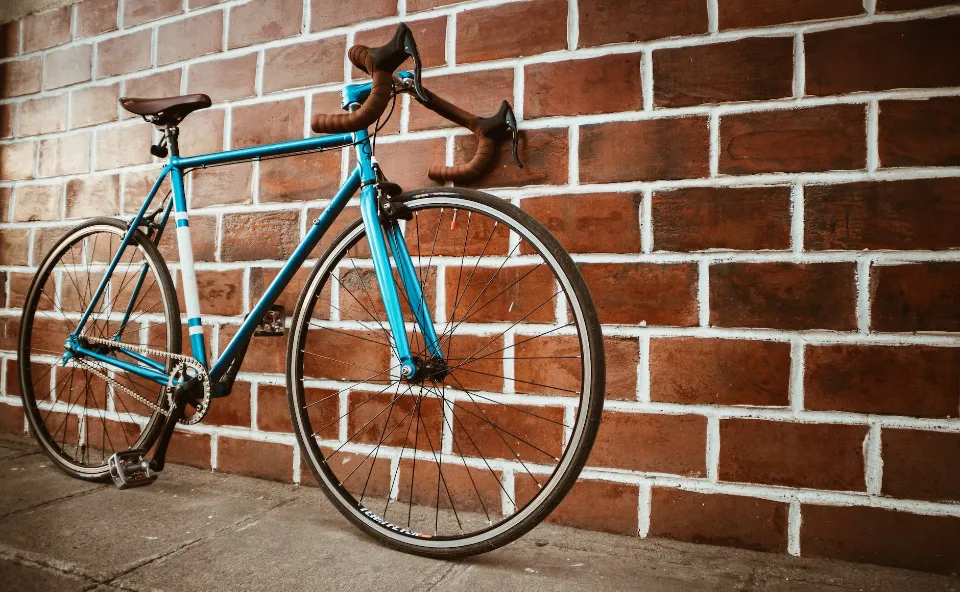Identifying the size of your bicycle wheels is the first step in buying a spare or replacement tire for it. Below will show you how to measure a bicycle tire and maintain wheels.
There are four methods to measure a bicycle tire, including the standard method, the ISO method, the calculation of the circumference of the bike’s wheel, and checking the bike’s manual.
Keep reading.
Table of Contents
How to Measure a Bicycle Tire?
Here are the ways to measure your tire:
The Standard Method
Use the kickstand or lean the bike against a wall to keep it upright. If the bicycle is upright, you can measure the wheel without it falling over on you. If you’re measuring the bike by yourself, a retractable metal tape measure is more durable while still allowing you to use your other hand than a plastic tape measure.
Measure the distance in inches between the ground beneath the tire and the wheel’s center point. This measurement is the radius of the wheel, or half of its diameter. Divide the length by two to obtain the tire’s diameter. Most adult bicycle wheels are between 26 and 29 inches in diameter except for either mountain bikes or BMX bikes.
The tire’s flat area across the tread should be measured from one side to the other. The distance is equal to the tire’s width. Depending on how the tire will be used, it varies considerably. The rougher the expected terrain, the broader the tread, while narrower tracks guarantee a smoother, faster ride.
Breadth should come after the diameter in order. When purchasing a new tire, keep in mind that traditional or standard sizes place the diameter first and then the breadth.

The ISO Method
Check to see if the ISO standard is used to measure the wheels on your bike. The International Organization for Standardization (ISO) measures the diameter of the wheel on your bicycle in millimeters.
ISO sizing is the most accurate technique for measuring tires at home. The most accurate measurement should be given to you.
The standard and ISO methods are used to measure the majority of tires. So that you can quickly check them, their sizes should also be printed on the tire’s sidewall.
Make sure the bike is propped up on its kickstand or leaning against a wall. From the center of the wheel to the inner edge of the tire, only measure in millimeters. To find the diameter, multiply the figure by two.
Bead seat diameter (BSD) and tire width in millimeters are both included in the ISO standard.
Measure the width of the tire in millimeters. Go from one side to the other while following the same steps as before. Keep in mind that, as long as the difference isn’t too large, you can use tires of various widths on the same bicycle wheel.
Calculate the Circumference of the Bike’s Wheel
Take the circumference into account. The circumference of a bicycle wheel is the distance around the outside of the wheel that you need to calibrate a bicycle speedometer, odometer, GPS or a suitable computer Similar to how changing the size of your car’s wheels causes the speedometer and odometer to give inaccurate readings, bicycle equipment must be set up based on the size of your tires. If you’ve recently purchased a cyclometer or need to calibrate an existing one because you’ve switched to tires with a different thread size, you’ll need to find out the circumference of the wheel.
To get the circumference, multiply the tire’s diameter by pi that is 3.14. You can quickly determine any circle’s circumference if you already know the tire’s diameter from side to side.
You can use one of the many online calculators to determine the circumference of the tire if you already know its diameter and breadth.
Measure the circumference using a string. Even if you are unsure of the diameter of the wheel, you can still calculate its circumference by evenly wrapping a rope around the outside edge of the tire. Make a mark on the thread or cut it so that it can be traced back to where it started, then measure the length to determine the circumference.
Put a spot of wet paint on a bicycle tire’s tread. At least two spins should be made with the bike being pushed straight, making sure the color touches the ground twice. Measure the distance on the ground between each paint blot to get an idea of the tire’s circumference.
Check Bike’s Manual
Your wheel sizes will most likely be listed in the bike’s specifications manual. Contact the bike shop where you bought your bike if this isn’t the case; they’ll be able to help.
The bike’s specifications can also be found by visiting the retailer’s website. The specs section needs to include the wheel size.

Steps to Measure a Bicycle Tire
- The bicycle can be raised using the kickstand or propped against a solid wall.
- To measure the tire’s outer edge, extend the tape measure in a straight line while holding one end of the tape against the bicycle wheel’s hub. To find the bike tire diameter using conventional sizing, multiply the number of inches by two. To determine the ISO diameter, measure in millimeters from the center of the wheel to only the inner edge of the tire and double the figure.
- From one tire side to the other, measure the flat area that crosses the tread. The width of the tire is as follows. Measure in inches for conventional tire measurements or in millimeters for ISO measurements.
- To determine the tire size, add the tire diameter and width measurements. The diameter is typically sized first, followed by the width, for bicycle tires. According to ISO dimensions, width comes before diameter.
The diameter of standard tire sizes is measured in whole-inch increments. If you are slightly over or under, round to the nearest inch.
Tips
- Tire sizes are typically printed on the tire’s sidewall and are expressed as diameter x width, such as 27×1.5. 27×1.5 isn’t always the same size as 27×1 1/2.
- Preventing the tire from rotating will improve the precision of your measurement when determining the diameter of the wheel.
- When measuring via the standard method, the diameter should be a whole number. Round fractional calculations to the closest inch.

Your Bike Wheels Maintenance
- Examine the Rims and Hubs
If you use rim brakes, your rim will last for more than 20,000 miles. It will last forever if you are using disc wheels. If you use rim brakes, you ought to check your wheels more frequently. Muddy or wet conditions will cause your bike’s wheels to wear out more quickly.
On the braking surface of most rims, there is a line. It will eventually disappear if your rim is worn out. If your rim’s sidewalls are too thin, the bow could split under the pressure of your tires.
To make sure the hubs are in good shape, you should also inspect them. If your seat is in good shape, you can swap out the entire wheel.
- After some time, tighten your spokes a bit
Your wheels might also not be working because of loose spokes. Squeeze two spokes together by putting pressure on them with your fingers. If the spokes are tight or loose, you’ll be able to tell.
You can tighten them by locating the area of the wheel that is closest to the frame with your fingers. The spokes should be evenly and slightly tightened using a spoke wrench. The wheel will be stable after just a few spokes have been tightened. You can proceed to the following step if it still doesn’t.
- True the Wheels
The work-stand is the ultimate answer to your actual problems. Keep your wheels accurate at all times. Fix it if they aren’t. Depending on the style of bike brake you use, you’ll notice that things aren’t functioning as they should.
If you choose to ignore it, your wheel will start to wobble. Brake rub may occur if your vehicle has rim brakes. Over time, your wheel will deteriorate and get more worn. You might need to replace your wheel earlier than you anticipated if you want a perfect bicycle.

FAQs
How Do You Take Off a Bicycle Wheel?
Depending on which side you want to go to, you can remove a bike wheel from either the front or back.
You can remove the front wheel by releasing your brake and flipping it over. To remove it from the fork, first release the quick release or remove the wheel nuts.
By shifting the chain onto the smallest cog and opening the break, you can take out the back wheel. The quick-release or wheel nuts must then be loosened. The wheel needs to be taken off and the rear derailleur pulled back.
How to Measure Bike Wheel Size for the Inner Tube?
You’ll need a measuring tape and a way to mark the circumference of the wheel to determine the inner tube’s wheel size. Measure the distance around the outside edge of the tire by positioning the measuring device in the center of the wheel. The spot where the tape meets the starting point should be marked on the ground. For the second wheel, repeat these steps. The circumference of your bike’s wheels is calculated as the distance between the two marks.
Is It Possible to Put a Road Bike Wheel on a Mountain Bike?
Wheels from a road bike can be mounted on a mountain bike frame. For commuters who ride their bikes to work and then switch to MTB bikes to ride the trails, this is a common option.
You may need to modify other components of your bike because mountain and road bike wheels are very dissimilar.
It is possible to mount road bike wheels on a mountain bike!
Summary: How to Measure a Bicycle Tire?
The great thing about this little article is that Bike Your Best will give you some of the simplest methods to measure bike wheel size. Hopefully, you can use them to begin determining the size of your bike’s wheels. Comment below with your thoughts.
If you have any questions, please leave a comment. Thank you for reading.



